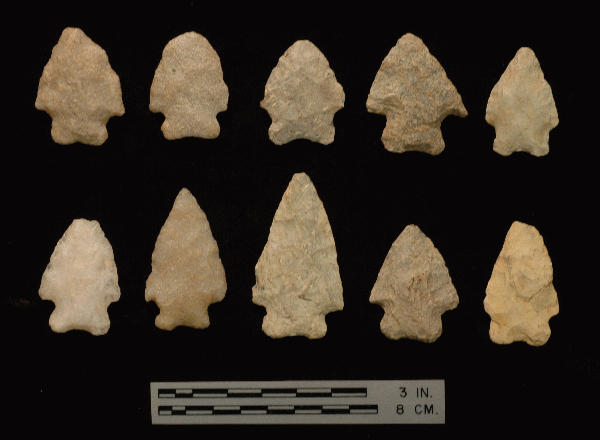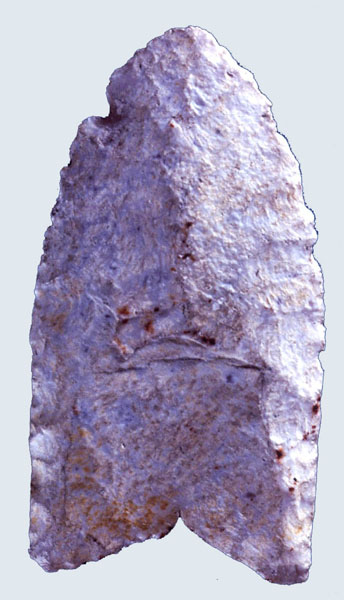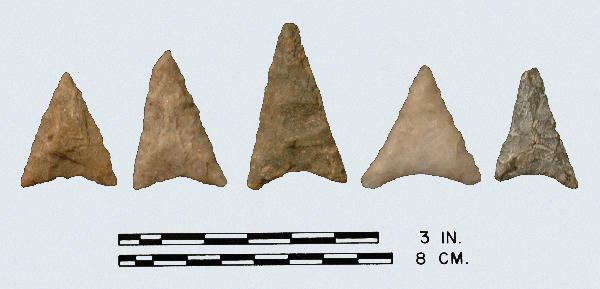
Slade: Top Row: quartzite, quartzite, rhyolite, rhyolite, tuff; Bottom Row: quartz, quartzite, rhyolite, rhyolite, tuff.
Type Side Notched Late-Archaic
Defining Attributes
The Slade is a medium size, wide point with an expanding and usually concave base. The blade is usually straight with an alternate edge bevel.
Chronology
The Slade point dates to the Late Archaic period, approximately 2800 to 2000 BCE. Slade points have been excavated at the Slade Site and Fanin Site along the Nottoway River, Virginia, but they have not been found with datable material. However, Slade points generally occur higher in the deposit than Halifax points but lower than the broad-bladed Savannah River type (McAvoy & McAvoy 1997).
Description
- Blade: The blade is usually straight with a decided alternate edge bevel, chipped from the right side with the tip upward. The stem is formed by notches originating from the corner or slightly up the side. The corners of the stem are rounded to extremely rounded.
- Base: The base is usually concave and expanding, and the basal edges are often ground. Heavy grinding on the shoulders and barbs is also common.
- Size: Length ranges from 45 to 75 mm. Width ranges from 28 to 40 mm. Thickness ranges from 6 to 12 mm.
- Technique of manufacture: Flaking was accomplished by broad soft percussion with pressure retouch on the base and blade.
Discussion
The Slade point is similar in shape to the Buffalo Expanding Stem reported by Broyles (1976) from Putnam County, West Virginia except the Slade point has a concave base stem. Mouer (1986) described a similar point from the Richmond area of Virginia which he named the State Farm point. Although the points have not been found in good context, Mouer placed the point in the Late Archaic period. Jack Hranicky defined a similar point, Culpepper, in 1988, but placed it within the bifurcate tradition of the Early Archaic period.
Defined in Literature
These points were first excavated by McAvoy on the Slade Site in 1985. The point type is named for that site. This type is discussed further by McAvoy based on points recovered from the Cactus Hill Site in Sussex County, Virginia.
References



